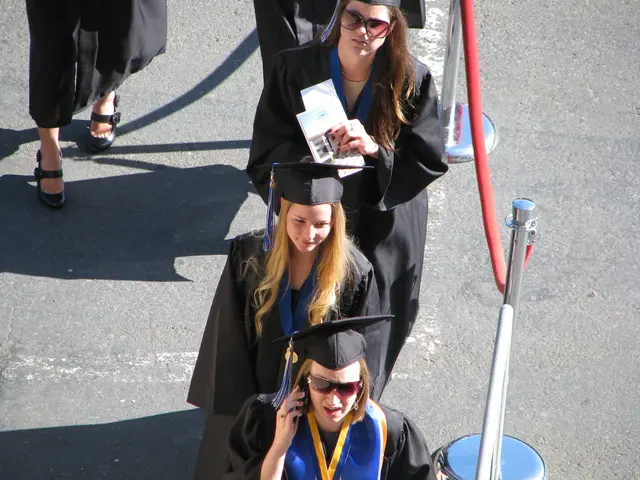Exploring School Success Factors: Crucial Elements in Student Motivation
In the realm of secondary education, fostering student motivation is a fundamental aspect that shapes a productive learning environment. By integrating a combination of intrinsic and extrinsic motivators, supported by a positive classroom culture and strong teacher-student relationships, educators can nurture a dynamic learning environment that sustains motivation and engagement.
Assessment tools powered by technology provide immediate feedback, aiding students in understanding their progress and areas for improvement. This prompt feedback is crucial for reinforcing learning and motivating students to apply suggestions promptly.
Interactive technologies, such as gamified learning and virtual reality, allow students to immerse themselves in educational content, making learning more enjoyable. Incorporating game elements, like badges, points, and leaderboards, creates engaging, fun learning experiences that support extrinsic motivation and can enhance intrinsic interest.
Clear goal-setting and self-monitoring are key strategies that help students set meaningful, achievable goals and track their progress. This promotes intrinsic motivation by fostering a sense of competence and personal growth. Recognizing small wins, such as through "Caught You Being Awesome" boards or success chains, builds motivation by reinforcing feelings of competence, belonging, and autonomy.
Creating a supportive classroom environment is essential for enhancing motivation. Arranging physical space to encourage collaboration, autonomy, and comfort, such as flexible seating arrangements, quiet areas for focus, and culturally responsive management, helps students feel safe and valued. Building strong teacher-student relationships, established through trust, individuality recognition, and a respectful, inclusive classroom culture, promotes relatedness, one of the core intrinsic motivators.
Understanding student motivation is essential for fostering a productive learning environment. Cultural relevance in curricula can enhance motivation, as it connects learning material with students' experiences. Diverse learning needs among students often create obstacles, requiring educators to cater to varied learning styles.
Cultural dimensions affecting motivation include individualism vs. collectivism, power distance, and attribution styles. The role of social media and digital collaboration tools is paramount in understanding how they influence peer interactions and self-efficacy.
Effective feedback should be specific and actionable, addressing strengths as well as areas for improvement. Providing timely and constructive feedback creates an environment where students feel valued and encouraged to strive for better results.
Future research on student motivation will benefit from interdisciplinary approaches that examine how biological factors, cognitive processes, and emotional states interact with educational practices. Cultural considerations significantly impact student motivation, as individuals' backgrounds shape their attitudes towards learning.
Fostering autonomy involves encouraging students to take charge of their own learning process, thereby enhancing their intrinsic motivation. Technology serves as a multifaceted tool in enhancing student motivation within secondary education. Personalized learning experiences, supported by artificial intelligence, promise to tailor educational pathways based on individual preferences and needs.
Future studies may explore how diverse learning environments impact motivation, such as hybrid and online learning platforms. Motivated students set personal goals related to their learning, such as aiming for high grades or mastering particular skills. Motivated students often persist in overcoming challenges and display resilience when faced with difficult tasks or concepts. Incorporating collaborative learning opportunities encourages teamwork and shared responsibility, cultivating a supportive classroom atmosphere.
By embracing cultural considerations and technological advancements, schools can mitigate barriers that hinder motivation. Enthusiastic involvement in extracurricular activities reflects student motivation. Setting clear goals helps students understand their objectives, fostering a sense of purpose in their academic pursuits. Schools can offer resources and programs that support students' needs, creating an environment that nurtures motivated learners.
- Teacher support, in the form of clear goal-setting and self-monitoring strategies, promotes intrinsic motivation by fostering a sense of competence and personal growth in students.
- Incorporating e-learning technologies, such as gamified learning and virtual reality, can enhance student motivation by offering personalized, engaging, and enjoyable educational experiences.




